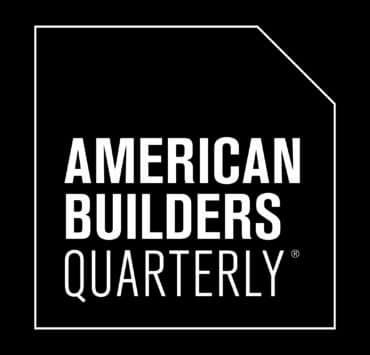|
Getting your Trinity Audio player ready...
|
The cupcakes were a big part of 2020. They started arriving on Stephanie Klasky-Gamer’s porch each week, delivered by a friend and bakery owner determined to maintain pre-pandemic volumes to keep her staff employed during COVID-19. Since the bakery had fewer customers than it otherwise would, Klasky-Gamer got the surplus sweets.
As president and CEO of LA Family Housing (LAFH), one of the largest providers of housing and homeless services in Los Angeles, Klasky-Gamer can always find a use for free desserts. Lately, the busy leader and lifelong advocate has been hand delivering them to residents of LAFH properties, participants of the agency’s services, and to staff working across the city to show her appreciation for their dedicated work.

Klasky-Gamer is a hands-on leader with a big heart. She was once a teenage volunteer during the 1980s at LAFH’s Valley Shelter in North Hollywood. That site was demolished in 2016 to make way for LA Family Housing’s $40 million, 80,000-square-foot headquarters, the Irmas Family Campus at LA Family Housing. The campus embodies LAFH’s mission and vision.
“We exist to end homelessness in people’s lives. We move people home together as both a real estate development firm and a homeless service provider,” Klasky-Gamer says. The campus thus includes more than 50 units of permanent supportive housing, a health and dental clinic for families and single adults, two comprehensive service centers, bridge housing, a technology center, and 4,300 square feet of community space.
LAFH is growing under Klasky-Gamer’s leadership. In the last decade, the nonprofit agency has seen its employee count go from 65 to 450 and its annual budget grow from $6 million to $75 million. Today, the organization operates 30 properties across Los Angeles.
In 2020, when the cupcakes started appearing on Klasky-Gamer’s doorstep, she realized something was about to change in her local community. “We knew COVID was hitting everyone around us. It wasn’t just the small businesses that had to change. LA Family Housing had to change, too,” she says.

The pandemic highlighted existing disparities in society including access to healthcare, food, and housing. With a record 66,000 people experiencing homelessness in LA County, LA Family Housing suddenly had an overwhelming demand for its services. The organization pivoted from its planned activities and responded by partnering with local restaurants to deliver free daily meals to thousands of individuals in the agency’s Bridge Housing sites.
Next, Klasky-Gamer and her executive leadership team hired 125 new employees to prepare for Project Roomkey, a collaboration between state and local governments and the Los Angeles Homeless Service Authority designed to protect high-risk Californians experiencing homelessness by providing shelter during the COVID-19 pandemic. By April 2020, LAFH had already moved 700 people into 5 converted hotels while also providing supplemental support services. The organization later purchased four hotels it will convert into long-term housing through a similar program known as Project Homekey.
Even before the pandemic, Los Angeles was already a city in need of more supportive housing solutions. That’s why LAFH is participating in the HHH program made possible by Angelinos who voted to approve a $1.2 billion housing bond in 2016. Klasky-Gamer’s team submitted an innovation grant with two partner organizations and was awarded $40 million in HHH subsidies. All three organizations will use the same architect, designs, documents, and legal teams to create a 60-unit modular template they can replicate at 6 different sites. “Together, we’re creating economies of scale to bring efficient and high-quality supportive housing to a city that so desperately needs it,” Klasky-Gamer says.

In late 2020, LA Family Housing cut the ribbon on Residences on Main, a permanent supportive housing building in South Los Angeles that is now home to formerly homeless families and young adults who have aged out of the foster care system. The apartment community provides resources and supportive staff onsite so the tenant families are stable and successful.
Klasky-Gamer says the building is different due to her organization’s dual nature. “We’re real estate developers who also provide critical services to the people who live in our buildings. We constantly think about what our residents need for success, and that changes the design,” she explains. Residences at Main includes studio units and various one-, two-, and three-bedroom layouts to accommodate transition age youth with different family structures.
Last year, LAFH served 11,000 people and moved nearly 2,300 individuals into permanent homes. But for Klasky-Gamer, the impact goes much deeper. “We know that our services go beyond the people we work with and create a ripple effect by transforming neighborhoods and communities. When we impact one person, that person has a different impact on local businesses, on other people, and on their families,” she says.

Like the Wizard, for instance. The Wizard was an energetic and aging man living on the streets of the San Fernando Valley whose flowing beard and pointy hat endeared him to local residents. Although mental health and substance abuse issues had plagued him for years, patient LAFH staff coaxed him into transitional housing and eventually into a new apartment building. The experience was transformational for the Wizard. On the night of the grand opening, the proud resident invited elected officials to tour his room.
Months later, the Wizard became critically ill and was rushed to the hospital. When Klasky-Gamer arrived, she found the man surrounded not only by his family but also LAFH case workers and the managers of his apartment building. “The Wizard died, but he died surrounded by a community who cared about him,” Klasky-Gamer says. “And he died with a home.


